The wheels on the bus go round and round,
Round and round, round and round!
The wheels on the bus go round and round,
All through the town!
Our grandson is almost 3 years old and he’s always loved to sing! One of the first songs he learned was “The Wheels On the Bus!” And whenever we are out and around town with him, he’s always on the look-out for a bus, especially a yellow school bus. I thought you might enjoy this clip of him, at two years old, riding his bike and and singing at the top of his little lungs. In case you have trouble adjusting your ears to his boy soprano, you’ll hear these verses emanating from his soul:
The wheels on the bus go round and round…
The wipers on the bus go swish, swish, swish…
The money on the bus goes clink, clink, clink—ALL THROUGH THE TOWN!!!!
Written by Verna Hills and published in 1939, this American folk song wasn’t written to depict school buses exclusively. “The money on the bus goes, clink, clink, clink!” might be your first clue. For Jackson and generations of school children though, the wheels definitely roll a yellow bus along the country lanes, suburban drives and inner city avenues to transport us to school and home again. As a country kid myself, our rural school district (centered around Junction City, Oregon) had quite a fleet of buses in order to round up students spread from the mid-Willamette Valley to the summit of the Coast Range mountains and hinterlands between. From kindergarten through 10th grade, my three sisters and I spent a good hour each school day on a school bus to assure our right to public education.
I suspect we learned as much on the bus as in the classroom sometimes. Each bus was its own distinct culture and kingdom, lorded over by the bus driver. Ours was Bus #16. Our driver was Wayne. Until I actually met him adult to adult, many years hence, I had no idea he was even in the realm of normal humanity. He was Wayne. The name on the front of his coveralls proved it. In fact, in those days, most school buses were manufactured by the Wayne Corporation in Wayne County, Indiana. So his name was on all the buses. For all I knew as a kid, he owned them all. In fact, Wayne was an auto mechanic.
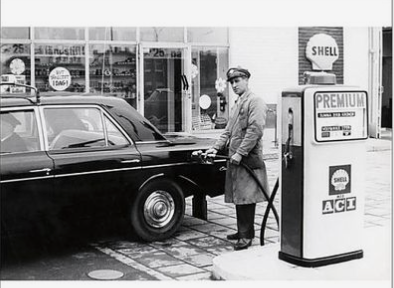
He owned the Shell station in town, so he was always greasy, his hands permanently black from years of oil changes, busted radiator repairs and blown head gaskets. We were all afraid of Wayne. When bus behaviors got out of control and kid noise levels rose to a million decibels, Bus #16 would lurch and careen as Wayne pulled her to the side of the road and we all knew there was hell to pay. He never smiled anyway, but when he stopped the bus and shut off the engine we’d all scrunch down in our seats and try not to wet ourselves as he stood, glared at us and broke into his regular hell fire and brimstone diatribe of threats and accusations. And, believe me, during those sermons one did not want to be caught smiling. Holy shit! Wayne was how I learned there was mean-ness and evil in the world. At the time I wasn’t really capable of grasping how someone so grim would always have our back. Thus is the fate of the unsung bus driver, I guess.
But why couldn’t we have Skeeter for God’s sake!?! Skeeter drove Bus 33. We never knew his given name. He was Skeeter and he was always grinning. He wore wire-rimmed glasses, sort of like John Lennon. Everyone knew his was the FUN BUS. But we, in a cruel destiny of bus route purgatory were stuck with WAYNE. Perhaps we were paying for the sins of our bus-riding ancestors?!? Did Uncle Elvan yank a schoolmate’s ponytail in the back of the bus in ’35? Did Mom put bubble gum on the driver’s seat? Who knows?
I remember the smells of bus world. My sisters and I weren’t allowed to buy anything from the snack machines at school—oh maybe the occasional red apple or chocolate milk. But the other kids had licorice! They ate, “Big Hunk” bars and all kinds of seductive smelling crap. And they had corn nuts! OMG, even today, if I smell corn nuts, the scent immediately transports me to a spot on the left side of Bus #16 about half way back where I’m leaning over the seat in front of me leering at the open bags of corn nuts in my colleagues’ hands. I’m wishing, just this once, I had the courage to sow my wild oats for a day, to take even one of those salty morsels in my teeth and crunch their sinister goodness. But I was always too shy to ask and too guilt-prone to steal!
Of course, as much as I will always love singing The Wheels On the Bus with our grandson, I can no longer sing with the innocence of my youth. In the past 18 months alone, with close attention to the inequities of our response to the pandemic and the re-emergence of Black Lives Matter, we all know too much to ignore the call to cling to the moral arc of the universe and bend it toward equity and justice in all our endeavors, including how we ride the school bus.
In January 2021, the U.S. Department of Transportation released some critical stats for understanding the how we ride the yellow bus. You shouldn’t be surprised to learn it’s not all about corn nuts and the bus driver. In a report titled “The Longer Route to School,” they found that:
1. Over half of pre-high students in the U.S. (20 million children) travel over 2 miles to school.
2. Half of these take school buses to school. Half are driven in private vehicles.
3. 20% of low-income families, own no vehicle—so 70% of their children take a school bus to school.
4. 99% of non-low-income families own at least 1 vehicle. Over 50% of their kids take a private vehicle to school.
5. 80% of low-income families own at least 1 vehicle. 60% of these still send their children on a school bus.
What there is to learn from these stats is so simple it’s profound—if we care. Namely, they show that the importance of school buses increases as income and the feasibility of private transportation decreases. Theologian Howard Thurman, in his book Jesus and the Disinherited, says the life of Jesus is a story of how God takes the side of “people who stand with their backs against the wall—disinherited from participation in meaningful social process, segregated from any stake in the social order.” Thurman didn’t say God takes the side of people who “sit with their backs against the seat of a school bus.” He didn’t have to. Jesus people and others of conscience need to pay attention to school buses. Why? Because we know access to educational opportunity is one huge key to the ability to thrive in our society, to meaningful participation, to having “any stake in the social order.” So we are called to care about the 20% who own no private vehicle, whose children are at highest risk of being disinherited from the American Dream but for school buses. In many of our largest cities, this means providing students free transportation on public mass transit. But for many, the yellow bus will always be the mechanical lifeline on which they absolutely depend.
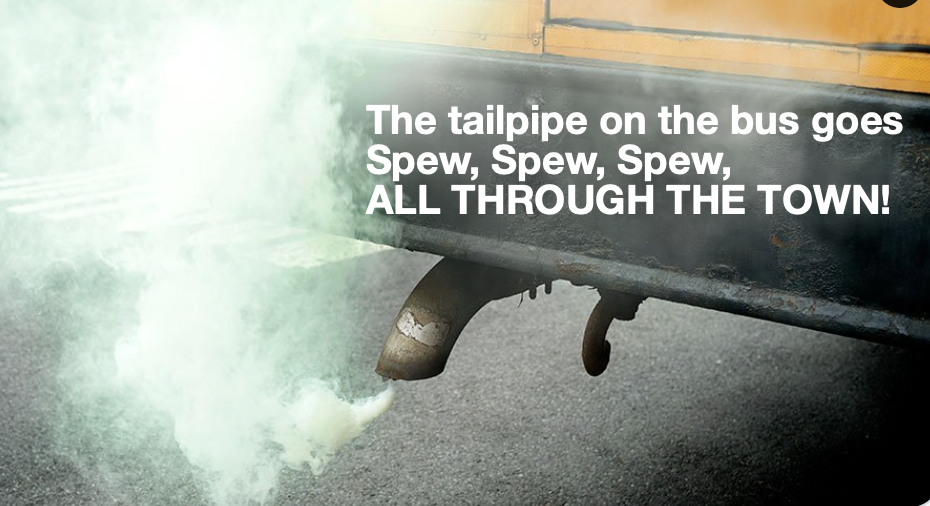
Which brings me to my reason for blogging this in the first place.
In my earliest memory bank of smells from school bus culture is the stench of gasoline exhaust. Truth to tell, the modern version of The Wheels on the Bus won’t be complete until it includes: “The tailpipe on the bus, goes spew, spew, spew!” This would be a version I might teach a 3-year-old. In real truth it should be: “The kids on the bus say ‘I can’t breathe!’ All through the town!’” About 55 percent of America’s public school students use buses to get to school. Our buses all ran on gasoline back in the day, but now 95 percent burn diesel. Researchers have measured pollutant levels on those buses, and they’re five to 10 times higher than pollution levels in nearby areas. There’s preliminary evidence that retrofitting school buses to pollute less, improves kids’ test scores, and that’s hardly surprising — the effects of air pollution on brain development are well-documented.
I hope you can see the implications of what I’m getting at. A disproportionate number of our lowest income brothers and sisters are African American, Hispanic, Indigenous and other human beings of color. Their children’s futures are much more dependent on school busing for access to education than the rest of us, especially those of white privilege. But the very buses we must send to their communities in greater numbers, pollute their lives first and worst, causing epidemic asthma and cardiovascular disease for those niños Jesus clearly said will be the ones to show us how we roll in the Beloved Community of justice and equity we seek. Possibly the most sinister sin of our bus route racism is how the diesel pollution jeopardizes even our children’s intellectual capacity. Since we can’t take away the buses, our resurrection here will only come of repentance from diesel and massive transformation to manufacture electric buses across our school districts.
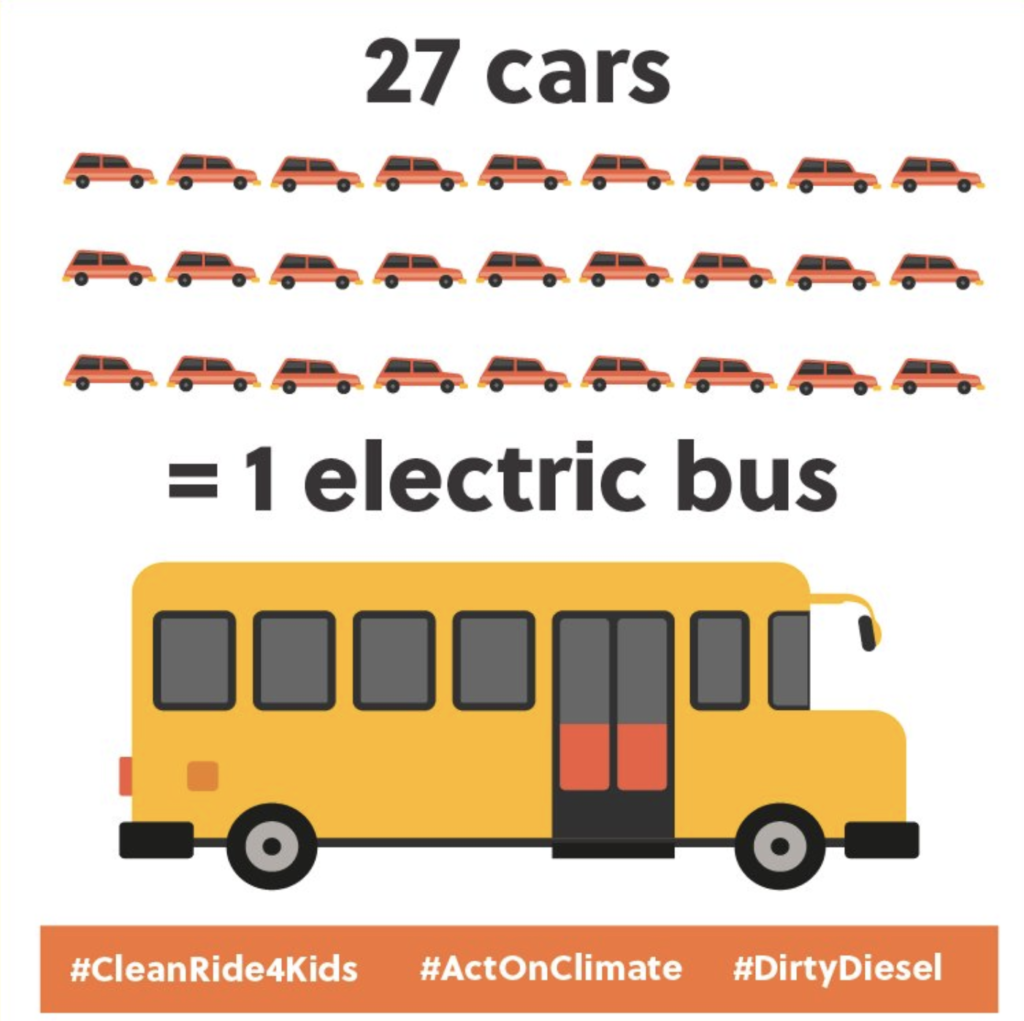
This is why I’m writing today, so you will know about this.
School bus electrification is beginning to happen. It is a solution standing at the brilliant intersection of climate healing and justice for the oppressed. This fall, with schools re-opening across the U.S., 25 million students will begin their daily transport to classrooms, cafeterias and playgrounds on our national fleet of 480,000 yellow buses.
In 2021 only 1% of these are electric. But electric bus world is growing rapidly, with more purchase orders placed weekly and massive federal funding for them proposed. Recently, Lion Electric USA announced they will build a huge e-bus manufacturing plant in Illinois with capacity to produce 20,000 electric school buses per year. Each bus will be able to travel 100-150 miles on one charge. Exchanging one diesel bus for an electric one is like taking 27 fossil fuel cars off the road. Virginia school districts have just ordered 50 e-buses from Thomas Built, one of the oldest U.S. school bus manufacturers and utility Dominion Electric has pledged to help get 1,500 more on Virginia school routes by 2030. Transforming the entire 480,000 bus fleet, we will eliminate 5.3 million tons of greenhouse gases (GHGs) annually, like taking a million fossil cars off the road.
Of course funding is a huge deal. The good news is that the choice of whether or how to fund electrification is as much about morality as it is about money. According to the National Renewable Energy Laboratory (NREL), electric buses cost an average $887,000 – almost twice as much as a diesel bus. However NREL also reports that those higher upfront costs are recovered after around 3.5 years, thanks to the much cheaper cost of operating them. But this isn’t just about payback is it? One of the biggest initial sources is the Mitigation Fund created by the settlement from the VW diesel cheaters. Six Oregon school districts have already received an e-bus with funds granted by PGE and Pacific Power from the VW settlement with another round of grant applications due August 31.
Possibly the best long term funding strategy, though, is for Utilities to get smart, using their knowledge of the tremendous future energy savings to work with states and school districts to provide upfront rebates in the form of discounts on monthly power bills to support affordable e-bus purchases. They can do this because they know future savings will come back to them.
Of course we will not move this transformation very far nor nearly fast enough without federal spending. That is, all of us in our democracy paying our fair share in order to keep all our children educated and safe. President Biden’s initial infrastructure bill called for funding to transform 20% of those 480,000 school buses to electric immediately. The current bi-partisan alternative allocates $7.5 billion to bus electrification. The national Electric School Bus Coalition knows it will take at least $25 billion to transform 20% of the fleet and really get us started. As I have said, budgets are moral documents. As long as we continue to allow the richest among us to effectively pay no taxes while the the world is on fire and our most marginalized school children can’t breathe or think, we are drowning in deep moral sewage. These students and their parents can best tell their own story! Check out their video below:
One of several reasons various utilities nationwide are investing in electric school buses is their potential to feed energy back into the electric grid, storing power for peak use when the sun don’t shine and the wind don’t blow. When carting Jackson around, we often drive on the Highway 97 overpass here in Bend, where we have a bird’s eye view of the bus corral where lives the yellow herd of Bend-LaPine school district buses when they’re at rest.
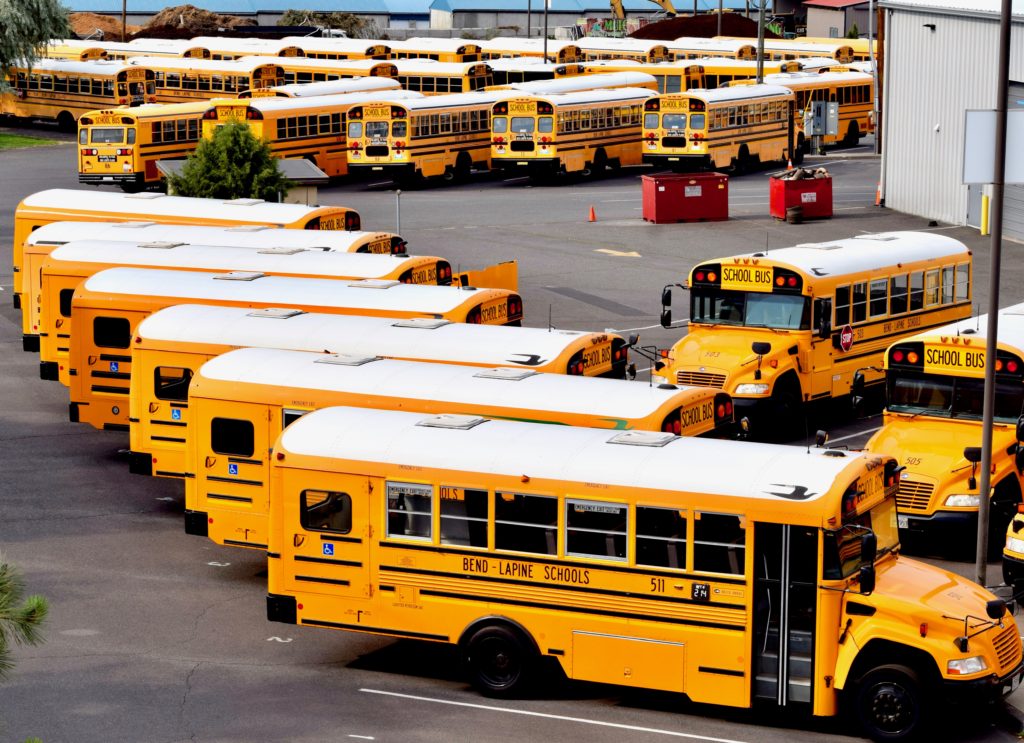
That’s a unique thing about school buses. On average, they transport kids only 5.5 hours/day and only 180 days/year. Think of the huge storage capacity of 480,000 electric buses sitting around 18.5 hours/day, 180 days/year and 24/7 on the remaining 185 days/year! Electric buses made by Lion and Thomas Built have battery packs with 220 kWh capacity. This means one bus could charge 13,500 cell phones or power 6.67 average U.S. homes for a day! As we learn the vulnerability of our current energy grid and the need to be smarter about generation and distribution, we know some massive storage strategies are needed, especially if we care about our most vulnerable who are always blacked out first and most. 480,000 buses fully charged, have the capacity to power 3,216,000 homes for a day. Think about it.
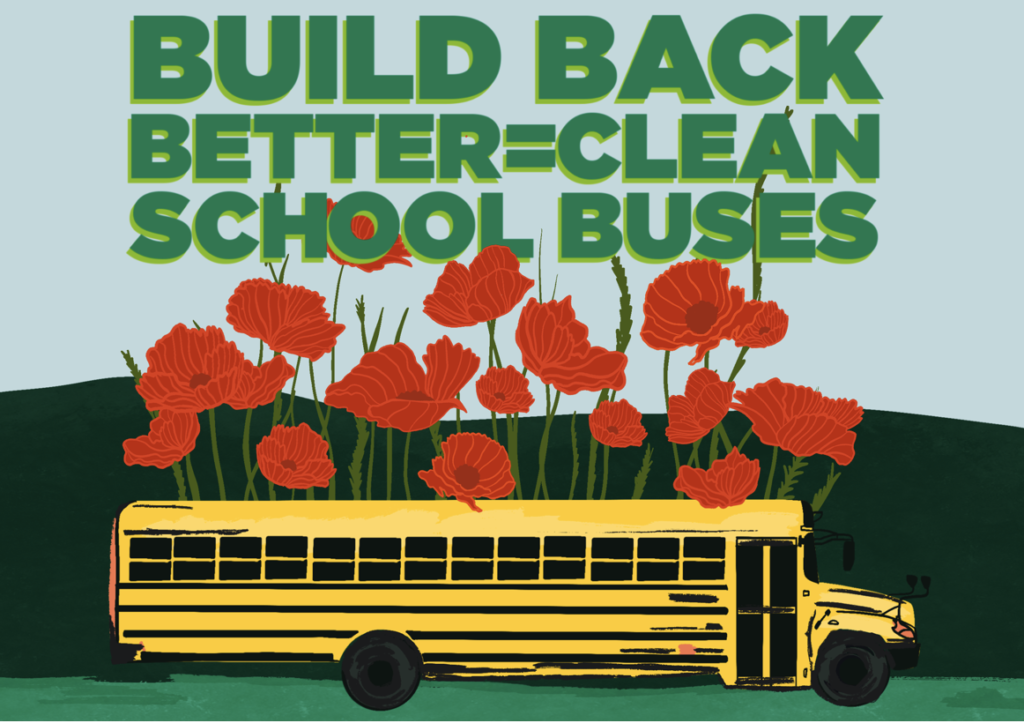
Yes. Think about it. And act. At minimum take these actions:
1. Subscribe to the Electric Bus Newsletter from Alison Wileyof the Electric Bus Learning Project.
2. Sign on to the Clean School Bus Act with CHISPA @ (CleanRide4Kids.org)
3. Join with Mom’s Clean Air Force— Add your name now and tell Congress to fund electric school buses. >>
One of the coolest things for us in Bend, Oregon is that, among the corral of yellow buses we showed you is an e-bus the Bend/LaPine School District just received through the pilot program of Portland General Electric and the Pacific Power utilities. It just arrived this spring and The Environmental Center in Bend in cooperation with the Electric Bus Learning Project (envirocenter.org/electricbus) sponsored a tour.
Over 5 days, the Lion-C electric school bus visited 12 school distracts, interacting with 140 participants including: transportation managers, bus drivers, mechanics, utility representatives, government regulators and non-profit workers. It is so exciting to see the benefits of electric technology expand to the students and staff who use buses to get to school. This kind of hands-on approach with those whose lives are most affected is the only way to go for people of conscience. For people of the Jesus story, it’s always Incarnational. Meaning, the messiah will always be a wide-eyed child of color, seated on the bus among the 20% whose families have no car, who, if they’re going to have any chance at life, must trust the yellow bus!
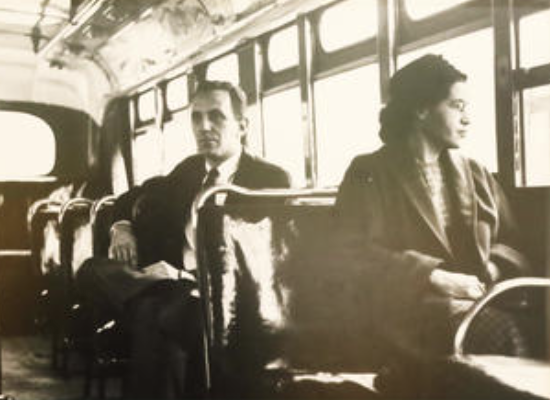
And mind you it’s not lost on me, even as an old white guy, that, in the same year I was taking my first ride on a school bus to get to school in Junction City, Oregon in 1955, Rosa Parks was refusing to move to the back of her bus, just trying to get home from work in Montgomery, Alabama with a rightful measure of dignity. In stark contrast to my privileged experience in bus world, her bus driver actually abused and harassed her every day, until, she and her community decided they’d had enough and the Montgomery Bus Boycott was born.
The only thing that really connects our stories is the bus and the calendar. My experience was nothing like hers otherwise. In fact, my bus brought me to a school where her story was never of enough value to be taught to us white kids. Still, I’m hoping this national work to electrify school buses will be a kind of Rosa Parks moment for us, where drivers, students and their communities will be truly transformed because we are choosing a different kind of power and a new way of sharing it. Those who have no dream will inherit one. Those who have no participation can truly participate. Any who can’t now breathe can take a breath and have a real stake in America and the measure of dignity everyone deserves here. The kids on the bus say, “I can breathe, I can breathe, I can breathe! All through the town!”
In the meantime, I wish I could’ve joined that electric bus tour to those eight school districts to visit with teachers and drivers, advocates and mechanics. I looked at all the photos though, and one, in particular, caught my eye. In closing I want you to see it. It shows a bald guy with a mechanic’s coverall looking under the hood of the electric school bus on tour.
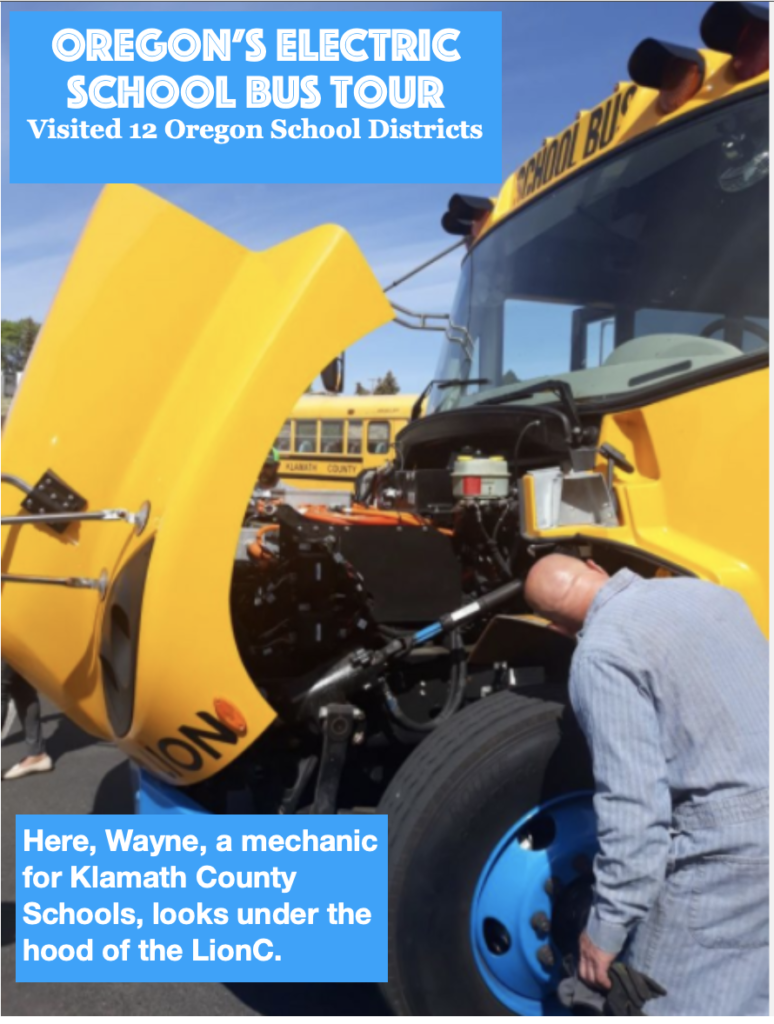
The caption says he’s a mechanic from the Klamath Falls School District and…(wait for it)…his name is Wayne. Just sayin.

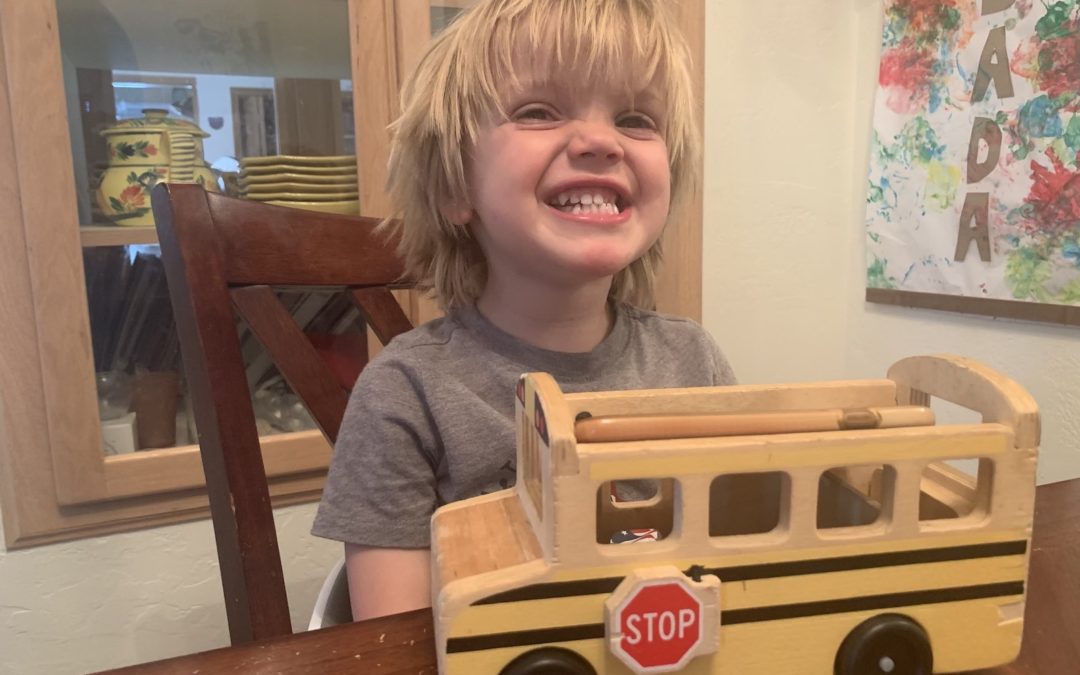
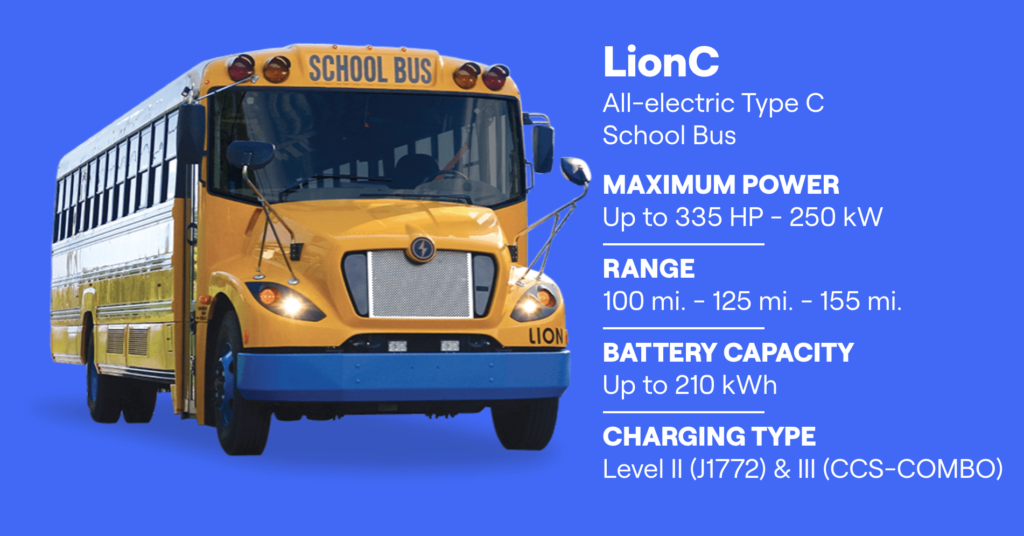
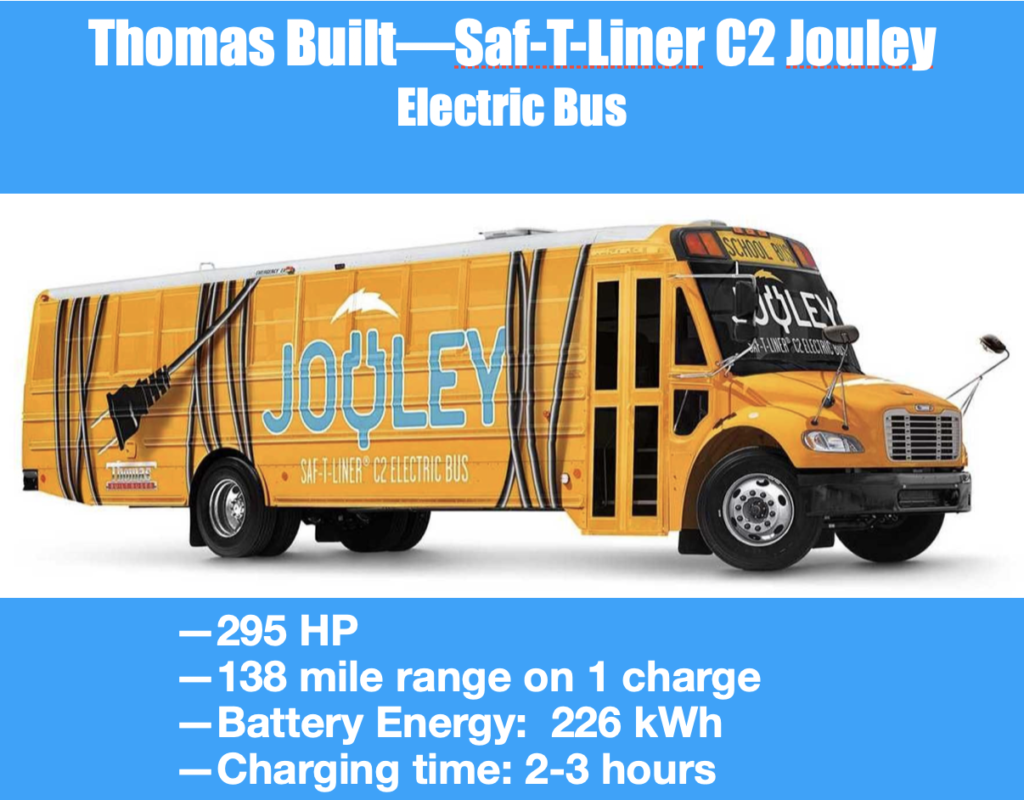
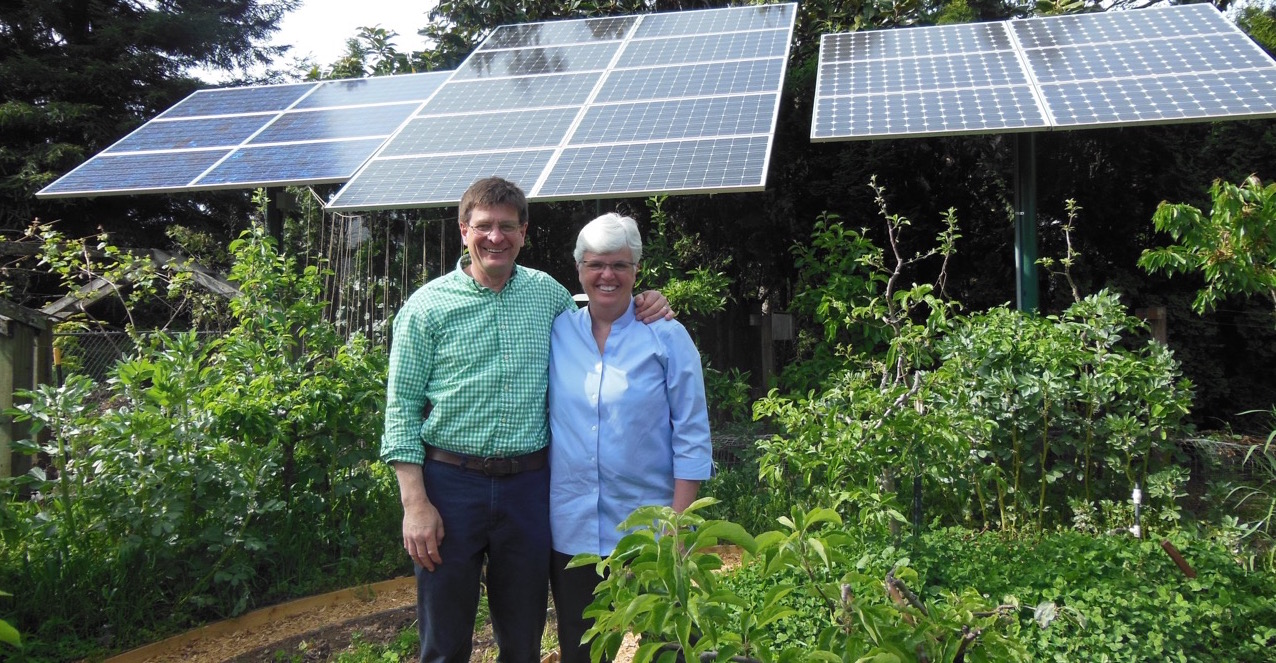






Great article and info, John! Your story telling approach always captures my attention. Jackson is becoming a well informed little guy with his grandparents input (and so are we readers).
This is a thought provoking read!! I sure love ya & the whole clan!! Keep up the good fight!
The inequity of school bus riding speaks to the inequity of who goes to which public school – or public school at all. But you do tell a good story.
I knew of the Biden plan for electric school buses but your email added so much dimension to the story. Loved the Wayne references. Thank you
Well done John. I’ve posted to my areas 2 EV car groups. We are working on this issues and it’s always nice to hear and see more pertinent information.